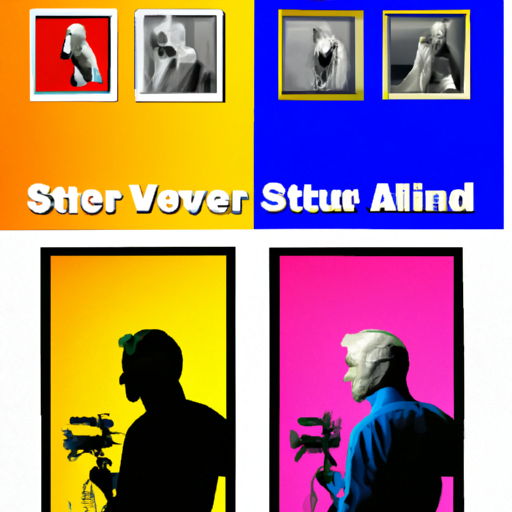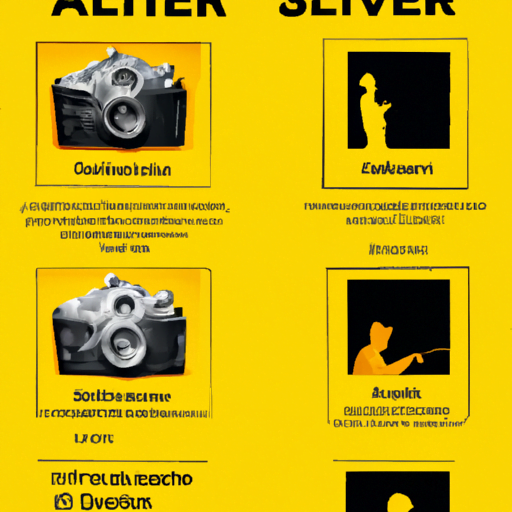
-
Table of Contents
- Iconic Movie Posters: Designing for the Silver Screen
- The Importance of Movie Posters
- The Evolution of Movie Poster Design
- Iconic Movie Posters: Case Studies
- 1. “Jaws” (1975)
- 2. “Star Wars” (1977)
- 3. “Pulp Fiction” (1994)
- 4. “The Dark Knight” (2008)
- The Role of Design Elements in Movie Posters
- 1. Typography
- 2. Color Palette
- 3. Imagery
- The Impact of Movie Posters on Pop Culture
- Conclusion
Iconic Movie Posters: Designing for the Silver Screen

Movie posters have been an integral part of the film industry since its inception. They serve as a visual representation of a film, enticing audiences and creating anticipation. A well-designed movie poster can capture the essence of a film and become an iconic piece of art in its own right. In this article, we will explore the art of designing movie posters and delve into some of the most iconic examples in cinema history.
The Importance of Movie Posters
Movie posters play a crucial role in the marketing and promotion of films. They serve as a powerful tool to grab the attention of potential viewers and generate interest in a movie. A well-designed poster can convey the genre, tone, and key elements of a film, creating intrigue and excitement.
One of the primary goals of a movie poster is to communicate the essence of a film in a single image. It should capture the attention of passersby and make them curious about the story being told. A successful movie poster can create a lasting impression and become an iconic symbol associated with the film.
The Evolution of Movie Poster Design
Movie poster design has evolved significantly over the years, reflecting changes in artistic trends, technology, and audience preferences. In the early days of cinema, movie posters were often hand-painted, featuring bold colors and dramatic illustrations. These posters aimed to capture the attention of potential viewers and convey the excitement of the silver screen.
As technology advanced, movie posters started incorporating photography and graphic design elements. The use of typography became more prominent, with bold and stylized fonts becoming a hallmark of movie poster design. The 1970s and 1980s saw the rise of the “floating heads” design, where the main actors’ faces were prominently featured on the poster.
In recent years, movie poster design has become more diverse and experimental. With the advent of digital design tools, designers have more freedom to explore different styles and techniques. Minimalist posters, typographic designs, and unconventional layouts have gained popularity, offering a fresh take on movie poster aesthetics.
Iconic Movie Posters: Case Studies
Let’s take a closer look at some iconic movie posters that have left a lasting impact on popular culture:
1. “Jaws” (1975)
The poster for Steven Spielberg’s “Jaws” is a prime example of effective movie poster design. The image of a massive great white shark lurking beneath an unsuspecting swimmer captures the suspense and terror of the film. The simplicity of the design, with minimal text and a striking visual, makes it instantly recognizable and memorable.
2. “Star Wars” (1977)
The original “Star Wars” poster, designed by Tom Jung, is a masterpiece of composition and storytelling. The poster features a collage of characters and scenes from the film, creating a sense of adventure and epic scale. The use of vibrant colors and dynamic poses adds to the excitement and captures the imagination of viewers.
3. “Pulp Fiction” (1994)
The poster for Quentin Tarantino’s “Pulp Fiction” is a prime example of minimalist design. The iconic image of Uma Thurman smoking a cigarette, with the film’s title in bold red letters, has become synonymous with the film itself. The simplicity of the design and the use of negative space make it visually striking and instantly recognizable.
4. “The Dark Knight” (2008)
The poster for Christopher Nolan’s “The Dark Knight” is a powerful example of using symbolism to convey the essence of a film. The image of Batman’s iconic logo, formed by skyscrapers and engulfed in flames, represents the dark and intense nature of the film. The use of a monochromatic color scheme adds to the dramatic effect and creates a sense of foreboding.
The Role of Design Elements in Movie Posters
Several design elements contribute to the effectiveness of movie posters. Let’s explore some of the key elements:
1. Typography
The choice of typography can greatly impact the overall look and feel of a movie poster. Bold and stylized fonts can create a sense of drama and excitement, while elegant and refined fonts can convey a more sophisticated tone. The placement and size of the text are also crucial in guiding the viewer’s attention and conveying important information.
2. Color Palette
The color palette of a movie poster sets the mood and tone of the film. Bright and vibrant colors can evoke a sense of energy and excitement, while darker and more muted tones can create a sense of mystery and suspense. The use of contrasting colors can also make certain elements stand out and draw attention.
3. Imagery
The imagery used in a movie poster should capture the essence of the film and create intrigue. Whether it’s a striking photograph, an illustration, or a collage of images, the visual elements should convey the genre, characters, and key themes of the movie. The composition and framing of the image are crucial in creating a visually appealing and impactful poster.
The Impact of Movie Posters on Pop Culture
Iconic movie posters have a significant impact on popular culture. They become symbols associated with the films they represent and can transcend the boundaries of the silver screen. Posters like “Jaws,” “Star Wars,” and “Pulp Fiction” have become iconic images that are instantly recognizable even to those who haven’t seen the films.
Movie posters often inspire fan art, parodies, and homages, further cementing their place in popular culture. They become collectible items, with enthusiasts seeking out original prints and limited editions. The influence of movie posters extends beyond the cinema, with their designs often influencing other forms of visual media, such as album covers and book covers.
Conclusion
Movie posters are not just marketing tools; they are works of art that capture the essence of a film and create anticipation among audiences. The evolution of movie poster design reflects changes in artistic trends and technology, with designers constantly pushing the boundaries of creativity.
Iconic movie posters like “Jaws,” “Star Wars,” “Pulp Fiction,” and “The Dark Knight” have become symbols associated with the films they represent. They have left a lasting impact on popular culture and continue to inspire and influence designers today.
Whether it’s through typography, color palette, or imagery, movie posters have the power to captivate and engage viewers. They serve as a visual gateway to the world of cinema, enticing audiences and creating anticipation for the stories that unfold on the silver screen.
So, the next time you pass by a movie poster, take a moment to appreciate the artistry and creativity behind it. It’s not just a promotional tool; it’s a piece of visual storytelling that can transport you to another world.
